 |
Today investors were again surprised by a Labor Department report that showed a gain in jobless claims and a drop in factory orders.
The Associated Press reports today that "Wall Street appears optimistic the Labor Department report Friday will indicate a rebound from August and include revisions to that month's dismal numbers. August's job creation report showed a decline in payrolls when economists had predicted a rise, and sent the Dow Jones industrial average down nearly 250 points the day it was released."
AntiSpin: We've been tracking the duration of unemployment numbers because they, combined with other data, are a decent leading indicator of future unemployment, especially at turning points.
Early in an economic slowdown, six months or more before companies lay off employees, they slow then stop new hiring. As thousands of employers reduce then stop hiring as the economy slows, anyone who is laid off experiences finding a new job takes longer and longer.
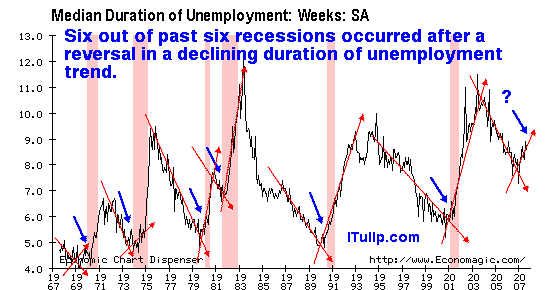
The economic factors causing employers to reduce hiring are causing the rise in duration of unemployment. At some point the process becomes self-reinforcing; the longer more people stay unemployed, the more spending and consumption is reduced, the more demand declines, the more pressure on firms to reduce head count rises, and so on.
A rising trend change in the duration of unemployment does not, of course, in itself indicate a future recession. Since 1980 duration of unemployment has turned up as much as it has today four times without a recession before reversing.
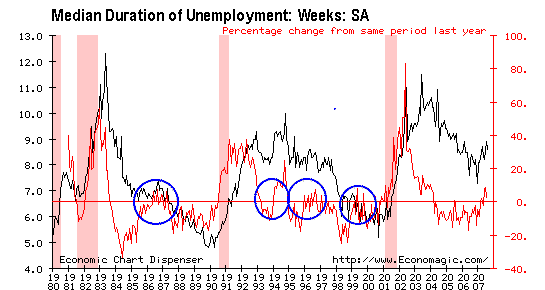
One of the reasons a trend change in duration of unemployment does not always correlate to recession is Fed policy. The chart below shows the past two Fed tightening induced recessions. Even aggressive rate cuts following a tightening cycle in the presence of rising duration of unemployment failed to prevent recession. The Fed's tightening certainly put the kibosh on the real estate sub-sector of the FIRE Economy, but did little to blunt inflation in the Production/Consumption Economy, as indicated by rising oil and commodity prices.
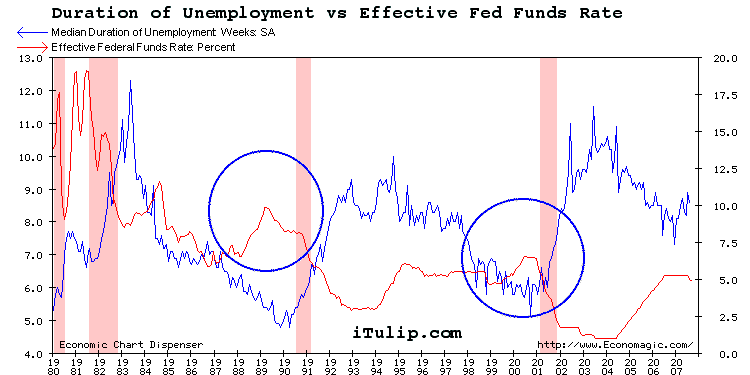
Duration of unemployment when plotted with declines in housing permits issued produces a chart that shows that for all recessions since 1970, with the exception of the post stock bubble recession in early 2001, whenever permits issuance falls as long as hard as it has while duration of unemployment has risen as much and as long as it has, recession has not been far behind.
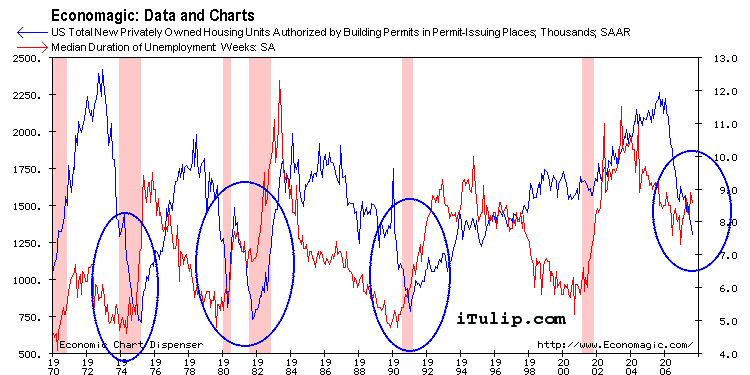
We expect Wall Street to be surprised again on the downside on Friday with worse than expected payroll numbers, and that may get priced in tomorrow.
iTulip Select: The Investment Thesis for the Next Cycle™
__________________________________________________
For a book that explains iTulip concepts in simple terms see americasbubbleeconomy
To receive the iTulip Newsletter or iTulip Alerts, Join our FREE Email Mailing List
Copyright © iTulip, Inc. 1998 - 2007 All Rights Reserved
All information provided "as is" for informational purposes only, not intended for trading purposes or advice. Nothing appearing on this website should be considered a recommendation to buy or to sell any security or related financial instrument. iTulip, Inc. is not liable for any informational errors, incompleteness, or delays, or for any actions taken in reliance on information contained herein. Full Disclaimer

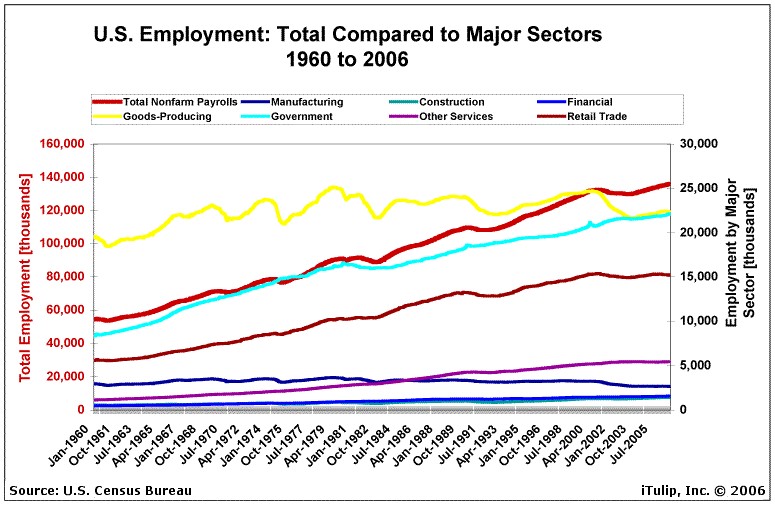
Comment